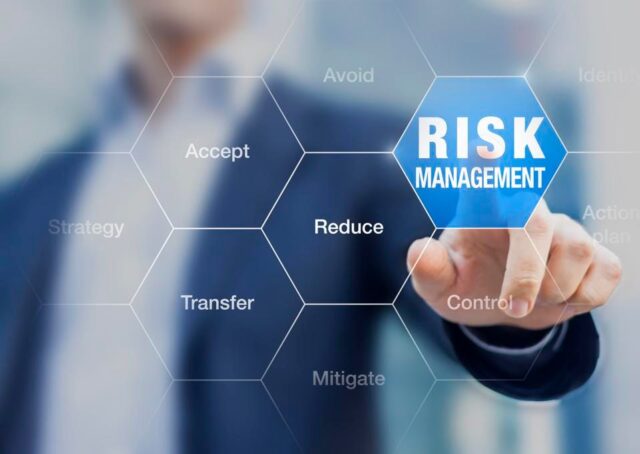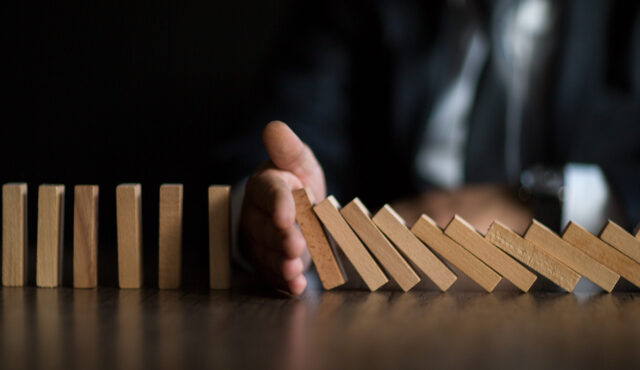
Managing a project involves risk, and managing risk is a process that responds to risk factors by identifying and analyzing them right through the entire life cycle of a project by providing a rational basis.
Whatever manufacturing business projects be, all the projects come with a certain amount of risk. With project management software for manufacturing, the potential risks can get mitigated. The software has a robust set of tools that helps forecast the risks, allowing project management professionals to prepare in advance. The risks identified beforehand help save money, the resources used, and the time spent on the project.
Managing Risk

The most crucial aspect of managing risk is a clear goal for a project to be delivered. A detailed project report should get written down, along with the vision, scope, objectives, and deliverables, as this will help identify the risk at any stage in the project.
With this fact in hand, the risk management team can identify and get prepared beforehand to face and solve the threat effectively and systematically.
Instead of just emailing the project team, the managers should send them a detailed report of what could go wrong with the project. To have this detailed report prepared, the entire project team, including the vendors and the representatives of clients, should come together and identify the potential threat.
The defined risk should get tracked and logged using a risk-tracking template that helps analyze and prioritize the threat level. Then a plan to capture the negative and positive impact of the oncoming threat should get included in the risk management plan. Transparency and regular meetings will help monitor the project’s status at any given time.
Minimizing Risk In Project Management

Risk management implies trying to foresee future risks and be proactive in minimizing the onset of chances of threat so it gets easily implanted into the project management process. The immensity of an event likely to occur will reduce. The process to minimize the danger in project management is:
1. Identifying Potential Risks
Knowing what the threat could be is necessary to solve it. The potential risk could get identified by
- Brainstorming with the stakeholders, factory colleagues, and the risk management team involved.
- Note all those things that can go wrong and set up a meeting with relevant experienced experts.
- The risk management team should keep track of past projects’ historical data.
Make sure to identify the root cause of the threat that significantly impacts the ongoing project. Sometimes pausing and taking note of self-intuition does help in worst-scene scenarios. Break down the structure of the threat process to separate the non-risk and risk scenarios.
2. Assess The Risk
The potential threat identified should get evaluated adequately for its severity. Assessing the probability and the threatening impact it has on destroying the company should get analyzed.
The probability of how quickly a potential threat can get countered has to get calculated beforehand to know the reaction time needed in case of an eventual threat. Since no relevant data is available, identifying future risks will be complex.
Serious steps should get taken to understand the danger associated as threat analysis is not just one dimensional but occurs at different stages of the manufacturing process.
In some cases, ignoring a small and harmless threat snowballed out of hand and was seriously affected in the long run. Such potential hazards can get handled effectively if the project manager has a cordial relationship with the management and the rest of the production staff.
3. Use Project Management Software

In today’s digitalized world, monitoring the project with the help of project management software helps in knowing the live data on real-time dashboards at any given time of the day.
Right from the get-go of the project, the software has a high-level view of the project that helps calculate data live and displays this data in the form of graphs and charts that are easy to read, which helps in pinpointing the issues at a faster pace, thus saving time and money.
4. Prioritizing Risks And Other Issues
Every risk is not equal. Once threats get identified, the risk management staff should prioritize and evaluate them to know what resources are required to resolve them. It helps in knowing which chances are urgent and which should get handled first.
Few risks involving a high amount of cost and risks associated with legal implications should get prioritized first and solved as soon as possible. Categorizing the risks makes it easy to ascertain and classify the threat into high, medium, or low risk.
With these perspectives in place, it becomes easy to make a concrete plan for how the potential threats can get solved. Then if serious issues get created due to the threat, an issue log should be maintained so that corrective actions can be taken to keep track of and solve them before it gets out of hand.
5. Contingency Plan For Risk
A vital part of risk management is the contingency plan for threats. If the threat becomes a reality, it helps outline appropriate steps to take as a contingency plan. It helps identify the triggering point, the response procedure needed to get taken, and assigning responsibilities to people from different departments, depending on the threat.
This contingency plan should get updated periodically after a review meeting to mitigate future threats.
6. Deal With The Risk
After analyzing and identifying the potential danger, it becomes a waste if there is no one to oversee that risk till its hazard gets over. While listing the potential threat and its impact, a person should get assigned to take responsibility for it until the danger resolves fully.
The risk management team should adequately propel itself to protect the project if a threat gets identified and assign it to a responsible, experienced person.
Conclusion
Following best practices to minimize the threat in manufacturing project management is a must; otherwise, it involves considerable wasted money that steals the profits and harms the organization.
Effective practices to minimize the threat helps assess these risks and allow proactively taking care of uncertain events. It helps in the timely delivery of a project with the quality intact.
In a project’s life cycle, a quarterly risk assessment should get carried out, as it will increase the percentage of successful project completion. It is advisable to implement continuous improvements in the organization to make it even better.







